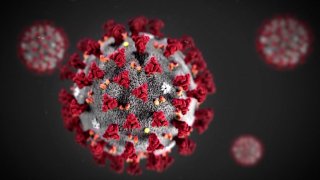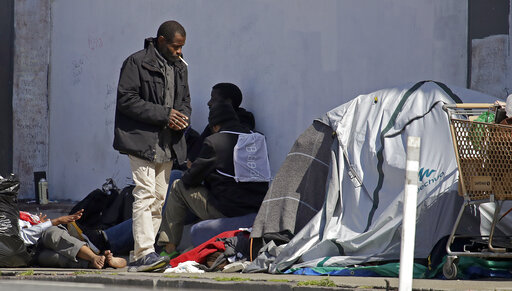
A new model designed to help state and local officials estimate the effects of social distancing and other public health interventions used to combat the COVID-19 pandemic was announced Tuesday by the Santa Monica-based Rand Corp.
As states roll out recovery road maps, the tool can help estimate the effects of rolling back disease-fighting efforts, as well as instituting new strategies, Rand said.
"State and local leaders have taken unprecedented measures to protect their communities during the COVID-19 pandemic,'' said Raffaele Vardavas, a Rand mathematician who specializes in modeling. "This tool was designed to help policymakers as they move forward and begin to have discussions about whether to modify the intensity of social distancing efforts and other public
health interventions.''
In general, the tool suggests that reopening larger segments of a state's economy prior to June 1 is likely to create a rebound in the daily number of people with COVID-19 who are hospitalized and currently in the intensive care unit.
Those rebounds would come sooner and can be more severe, the more restrictions that are relaxed, Rand determined.
The tool is available to policymakers and the public on the RAND website -- at www.rand.org/pubs/tools/TLA173-1/tool.html -- and is expected to be updated daily as new data become available. Researchers created the tool based on evidence from past epidemics, peer reviewed literature and data from the current pandemic.
The free tool, which was released Monday, combines information from both epidemiological and economic models to estimate the effects of five different disease-fighting portfolios on public health metrics.
The five portfolios vary in intensity from a single measure -- close schools -- to five simultaneous measures -- close schools, bars and restaurants, ban large events, close non-essential businesses and require everyone other than essential workers to shelter-at-home.
By selecting a portfolio of strategies, users of the tool can estimate the public health and economic consequences at the state level of imposing or lifting restrictions.
The model will generate estimates for the projected change in coronavirus infections, fatalities, hospital capacity and gross state income, according to Rand.
A separate analysis will produce a qualitative scorecard on the efficacy, feasibility, cost and unintended consequences of individual strategies, including those related to disease isolation -- testing, travel restrictions, and isolating infectious cases-- behavioral changes -- wearing masks -- and various social distancing policies -- school closings, bans on large gatherings and orders to shelter-at-home, according to Rand.
"We've seen dramatic economic displacement since the beginning of the U.S. response to the COVID-19 pandemic,'' said Aaron Strong, a Rand Corp. economist who helped design the tool. "This tool can help leaders better appreciate both the economic and public health challenges as they develop recovery road maps.''



